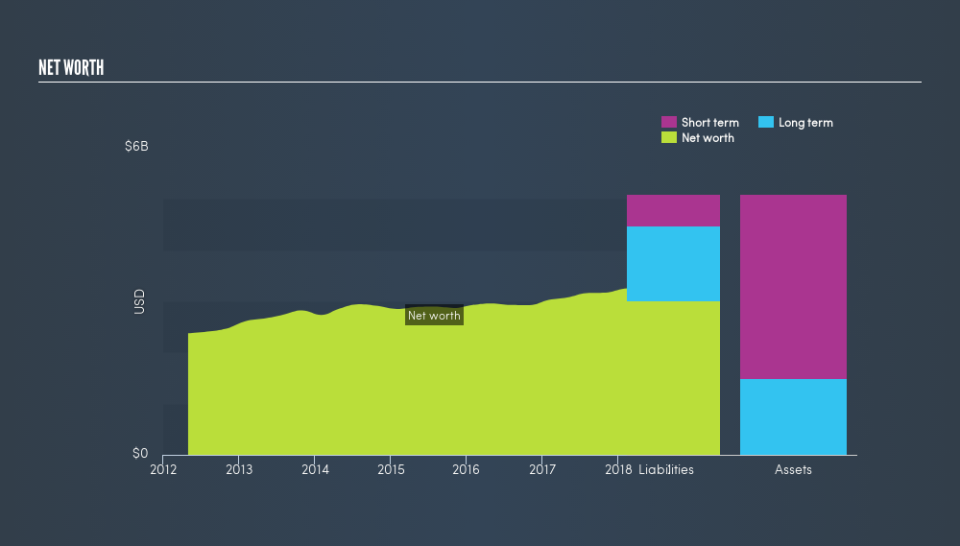One Factor To Consider Before Investing In Tiffany & Co. (NYSE:TIF)

Want to participate in a short research study? Help shape the future of investing tools and receive a $20 prize!
Tiffany & Co. (NYSE:TIF) shareholders, and potential investors, need to understand how much cash the business makes from its core operational activities, as well as how much is invested back into the business. After investment, what’s left over is what belongs to you, the investor. This also determines how much the stock is worth. I’ve analysed below, the health and outlook of TIF’s cash flow, which will help you understand the stock from a cash standpoint. Cash is an important concept to grasp as an investor, as it directly impacts the value of your shares and the future growth potential of your portfolio.
See our latest analysis for Tiffany
What is Tiffany’s cash yield?
Free cash flow (FCF) is the amount of cash Tiffany has left after it pays off its expenses, including its net capital expenditures, which is what the company needs to spend each year to maintain or grow its business operations.
I will be analysing Tiffany’s FCF by looking at its FCF yield and its operating cash flow growth. The yield will tell us whether the stock is generating enough cash to compensate for the risk investors take on by holding a single stock, which I will compare to the market index. The growth will proxy for sustainability levels of this cash generation.
Free Cash Flow = Operating Cash Flows – Net Capital Expenditure
Free Cash Flow Yield = Free Cash Flow / Enterprise Value
where Enterprise Value = Market Capitalisation + Net Debt
Along with a positive operating cash flow, Tiffany also generates a positive free cash flow. However, the yield of 2.97% is not sufficient to compensate for the level of risk investors are taking on. This is because Tiffany’s yield is well-below the market yield, in addition to serving higher risk compared to the well-diversified market index.
Is Tiffany’s yield sustainable?
Another important consideration is whether this return is likely to be maintained over the next couple of years. We can gauge this by looking at TIF’s expected operating cash flows. Over the next couple years, the company is expected to grow its cash from operations at a double-digit rate of 28%, ramping up from its current levels of US$658m to US$842m in three years’ time. Although this seems impressive, breaking down into year-on-year growth rates, TIF’s operating cash flow growth is expected to decline from a rate of 11% in the upcoming year, to 7.1% by the end of the third year. But the overall future outlook seems buoyant if TIF can maintain its levels of capital expenditure as well.
Next Steps:
The company’s low yield relative to the market index means you are taking on more risk holding the single-stock Tiffany as opposed to the diversified market portfolio, and being compensated for less. Though the high operating cash flow growth in the future could change this. Keep in mind that cash is only one aspect of investment analysis and there are other important fundamentals to assess. I suggest you continue to research Tiffany to get a better picture of the company by looking at:
Valuation: What is TIF worth today? Is the stock undervalued, even when its growth outlook is factored into its intrinsic value? The intrinsic value infographic in our free research report helps visualize whether TIF is currently mispriced by the market.
Management Team: An experienced management team on the helm increases our confidence in the business – take a look at who sits on Tiffany’s board and the CEO’s back ground.
Other High-Performing Stocks: If you believe you should cushion your portfolio with something less risky, scroll through our free list of these great stocks here.
We aim to bring you long-term focused research analysis driven by fundamental data. Note that our analysis may not factor in the latest price-sensitive company announcements or qualitative material.
If you spot an error that warrants correction, please contact the editor at editorial-team@simplywallst.com. This article by Simply Wall St is general in nature. It does not constitute a recommendation to buy or sell any stock, and does not take account of your objectives, or your financial situation. Simply Wall St has no position in the stocks mentioned. Thank you for reading.

